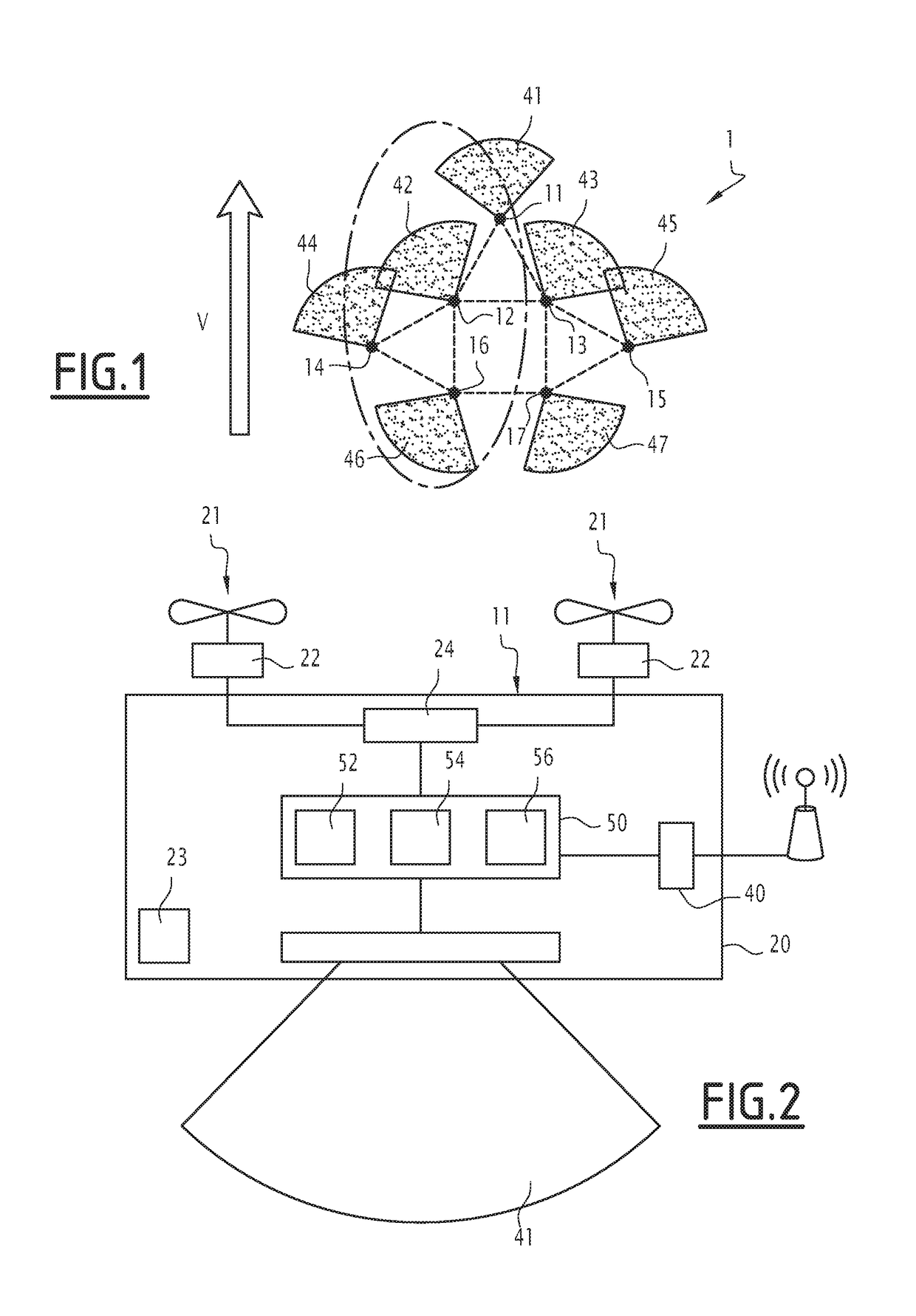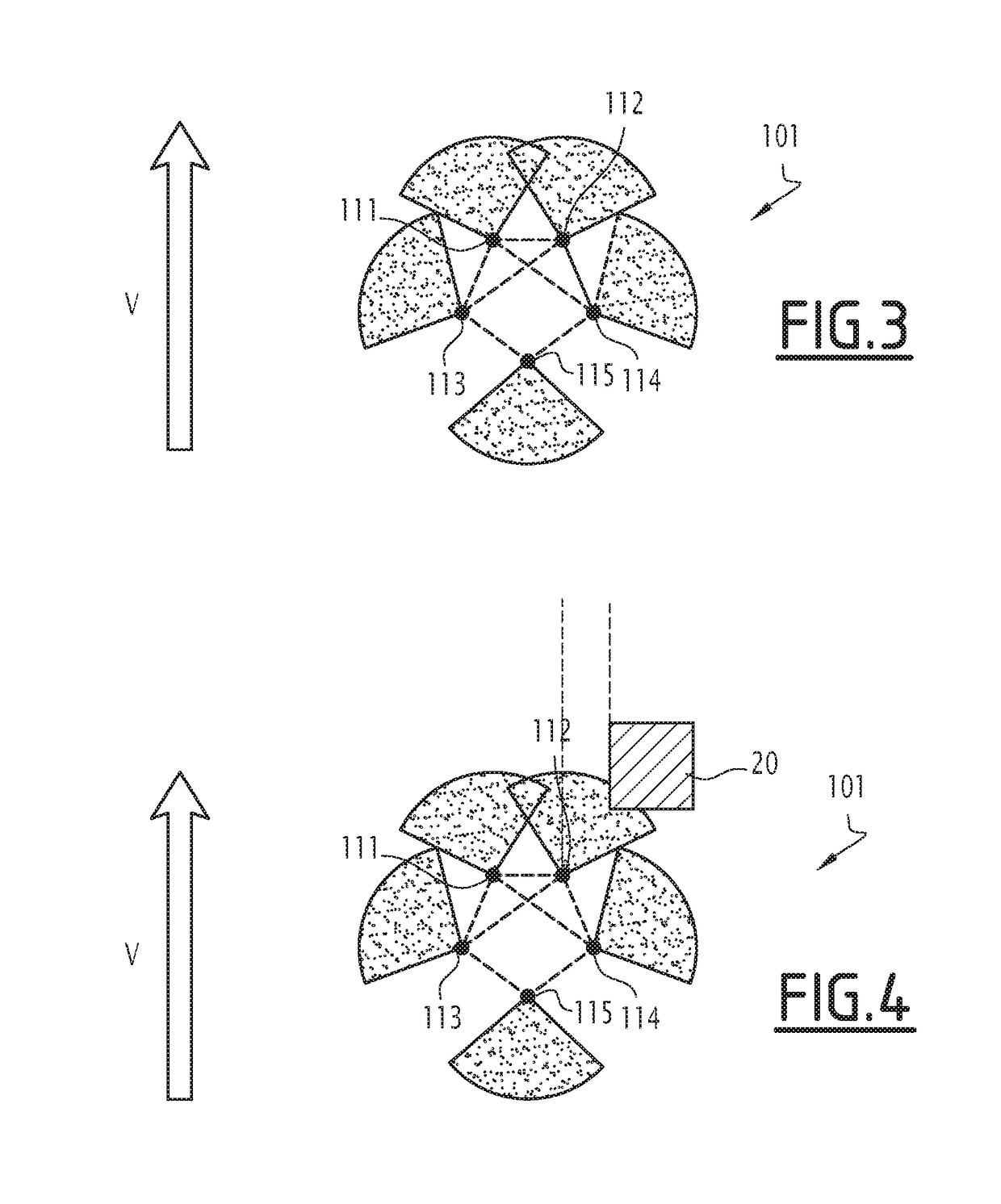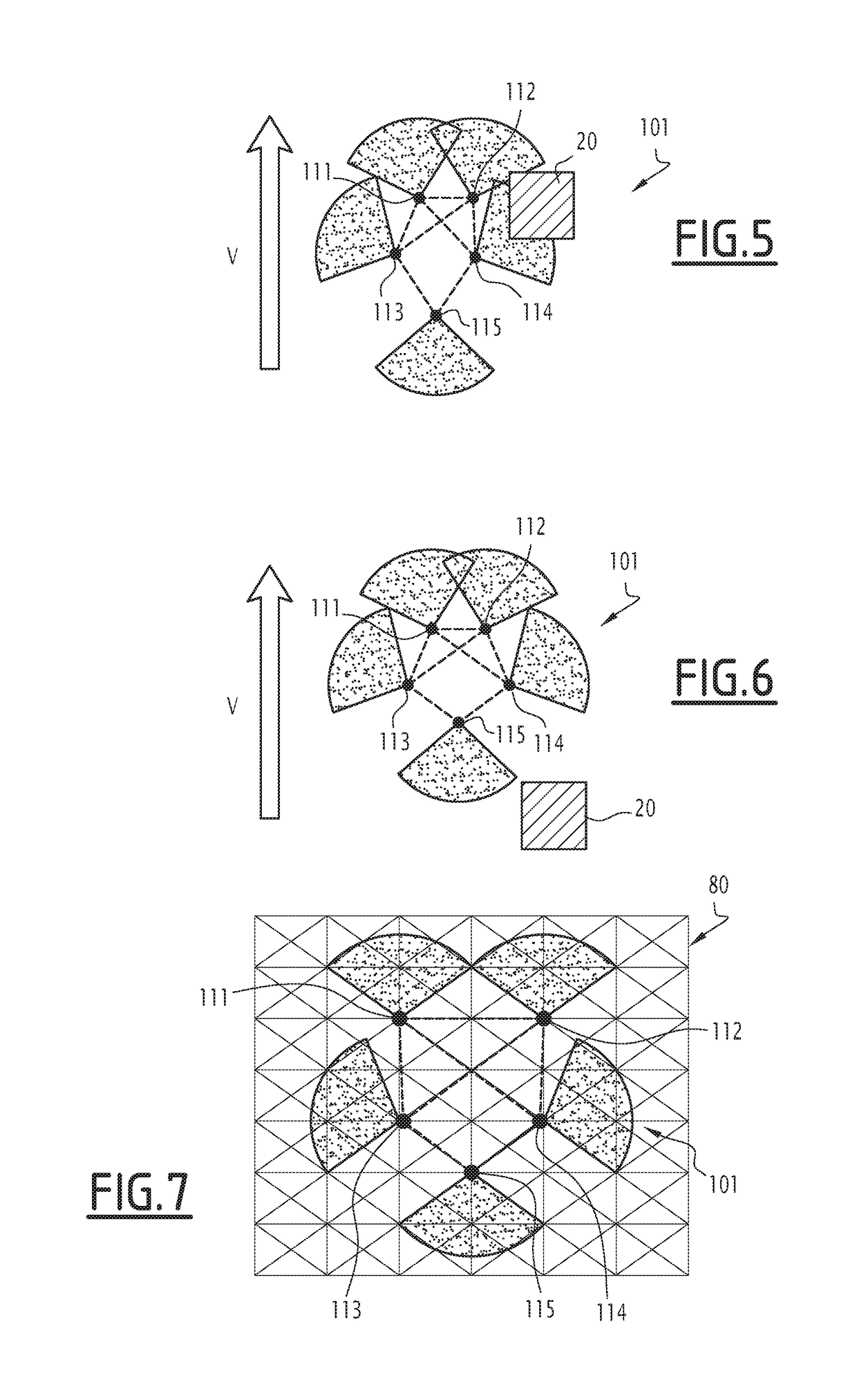Swarm consisting of a plurality of lightweight drones
a drone and swarm technology, applied in the direction of vehicle position/course/altitude control, process and machine control, instruments, etc., can solve the problems of large weight, inability to detect and avoid obstacles, and laborious and therefore costly
- Summary
- Abstract
- Description
- Claims
- Application Information
AI Technical Summary
Benefits of technology
Problems solved by technology
Method used
Image
Examples
Embodiment Construction
General Principle
[0044]According to the invention, each drone in the swarm has an inexpensive on-board sensor system with a reduced weight, but which only makes it possible to observe a limited fraction of the environment of the swarm. The geometry of this partial observation envelope depends on the angular coverage of the selected on-board sensor(s).
[0045]While each drone may only provide an observation of the environment inside a reduced observation envelope, the drones share the obstacle detection information that they produce by exchanging this information with one another over the communication network that they establish with one another.
[0046]Each drone may then develop a depiction of the environment indicating the obstacles to be avoided. The obstacle detection functionality is therefore distributed among the various drones.
[0047]Based on this depiction, each drone determines its individual trajectory in real-time so as to avoid collisions with the detected obstacles.
[0048]T...
PUM
 Login to View More
Login to View More Abstract
Description
Claims
Application Information
 Login to View More
Login to View More - R&D
- Intellectual Property
- Life Sciences
- Materials
- Tech Scout
- Unparalleled Data Quality
- Higher Quality Content
- 60% Fewer Hallucinations
Browse by: Latest US Patents, China's latest patents, Technical Efficacy Thesaurus, Application Domain, Technology Topic, Popular Technical Reports.
© 2025 PatSnap. All rights reserved.Legal|Privacy policy|Modern Slavery Act Transparency Statement|Sitemap|About US| Contact US: help@patsnap.com



